
Mercury before sunrise
Especially if you’re in the Northern Hemisphere, mornings in mid- to late October are a good time to try for Mercury. Because it’s the innermost planet, Mercury never strays far from the sun in Earth’s sky. But about six times a year, Mercury swings out to one side of the sun as seen from Earth. At those times, we see it either in the east before dawn or in the west after sunset. When Mercury is farthest from the sun on the dome of Earth’s sky, astronomers say it’s at greatest elongation. Mercury’s next greatest elongation is October 25 at 6 UTC. No matter where you are on Earth, look east before sunrise to bag this elusive planet in mid-to-late October, and into November 2021.
The Northern and Southern Hemispheres trade places in being able to see Mercury best. The late October/ early November morning apparition of Mercury is best for the Northern Hemisphere. In fact, it’s our best Mercury apparition of 2021. From northerly latitudes, the autumn angle of the ecliptic – or path of the sun, moon and planets – will cause Mercury to leap up in the east quickly, after about mid-October.
Leap up from where? From our line of sight to the sun. On October 9, Mercury was at inferior conjunction, or passing between us and the sun. It was in the sun’s glare then, not visible in our sky. This planet is named for Mercury, the fleet-footed messenger god of Roman mythology. And it lives up to its name after about mid-October 2021, by speeding up into the predawn sky. It’s following the steep angle of the ecliptic for the Northern Hemisphere. In this hemisphere, beginning around the morning of October 20 (or earlier if you look carefully), you can watch for it in the east before sunrise. By October 25 – the date of greatest elongation – Mercury will be rising more than an hour before the sun. It’ll be shining brightly at magnitude -0.7. This greatest elongation is Mercury’s brightest of 2021. Don’t mistake Mercury for the star Arcturus, which you might glimpse to the left (north) of Mercury, along the eastern horizon.
Mercury’s distance from the sun in the sky at this elongation will be nearly as small as it can be: only 18.4 degrees. But because it occurs in the autumn for the Northern Hemisphere, Mercury will still appear far enough above the horizon that it’ll have its best appearance in the morning sky for northern observers.


A comparison of elongations
Not all greatest elongations are created equal. Some are greater than others. The farthest from the sun that Mercury can ever appear on the sky’s dome is about 28 degrees. The least distance is around 18 degrees.
Elongations are also better or worse depending on the time of year they occur.
In the autumn for either hemisphere, the ecliptic is makes a narrow angle to the horizon in the evening. But it makes a steep slant, nearly perpendicular, in the morning. So – in autumn from either hemisphere – morning elongations of Mercury are best. Then Mercury appears higher above the horizon and farther from the glow of the sun. Evening elongations in autumn are harder to see.
In the spring for either hemisphere, the situation reverses. The ecliptic and horizon meet at a sharper angle on spring evenings and a narrower angle on spring mornings. So – in springtime for either hemisphere – evening elongations of Mercury are best. Morning elongations are harder to see.
The chart below says it best:
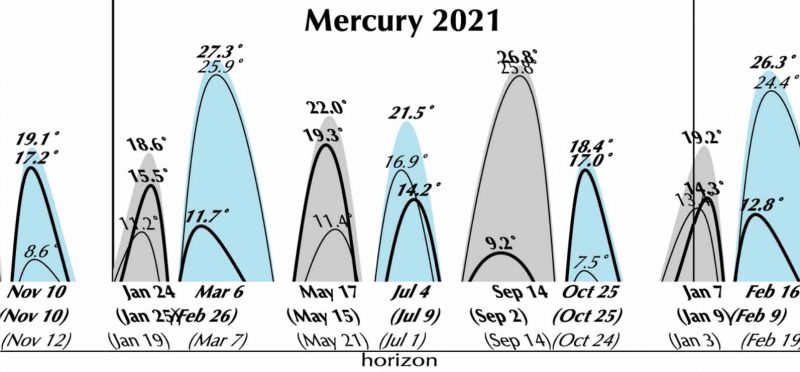
Mercury in October-November 2021
At this October 2021 elongation of Mercury, the planet shines at around magnitude -0.7. So it’s bright, brighter than any stars near it in the predawn sky in October or early November, 2021. Mercury will continue to brighten into November, but then it gets closer and closer to the sun and will be harder to see it as sunrise approaches.
The planet is in front of the constellation Virgo the Maiden when at greatest elongation on Ocrober 25. Will you also see Virgo’s brightest star Spica? No, probably not in October. But you will likely see this bright star emerge near Mercury in the east before sunup in early November.
Around that same time, early November, the moon will sweep through. Mercury will be 1.2 degrees S. of the moon on November 3, 2021. The moon will occult – or cover – Mercury on this date. The occultation of Mercury will be visible from much of Canada and the northeastern United States. The RASC’s Observer’s Handbook points out:
Both the moon and Mercury will be 15 degrees from the sun, with all three objects high in the sky at ~19 UTC. A telescope with an advanced operator is a must for this event.
Telescopic observers will see Mercury about 57 percent illuminated, in a gibbous phase like a waxing gibbous moon, around the October 25 elongation. The phase, too, will grow larger as the month progresses, and as October shifts into November. But again, as it nears the sun it is drowned out from the light of the rising sun.
The size of Mercury is 6.9 arcseconds on October 25. Because Mercury is moving farther away from us in its orbit, the size will decrease over the following days.

Mercury events in 2021
October 9: Mercury at inferior conjunction (passing between the Earth and sun)
October 25: Greatest western elongation (visible east before sunrise)
November 3; Occultation of Mercury by the moon (moon covers Mercury)
November 29: Mercury at superior conjunction (behind the sun from Earth)
Dates above via Celestial Phenomena



Bottom line: Mercury reaches greatest western elongation on October 25, 2021, when it rises ahead of the sun and can be spotted in the morning sky.
The post After mid-October, watch for Mercury before sunrise first appeared on EarthSky.
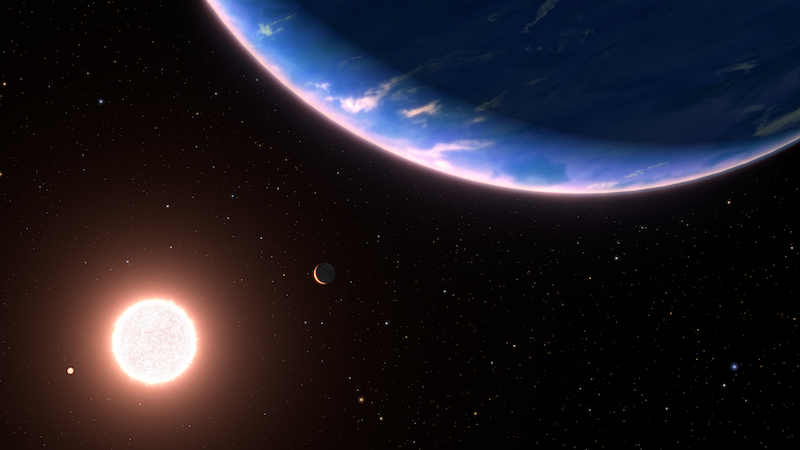



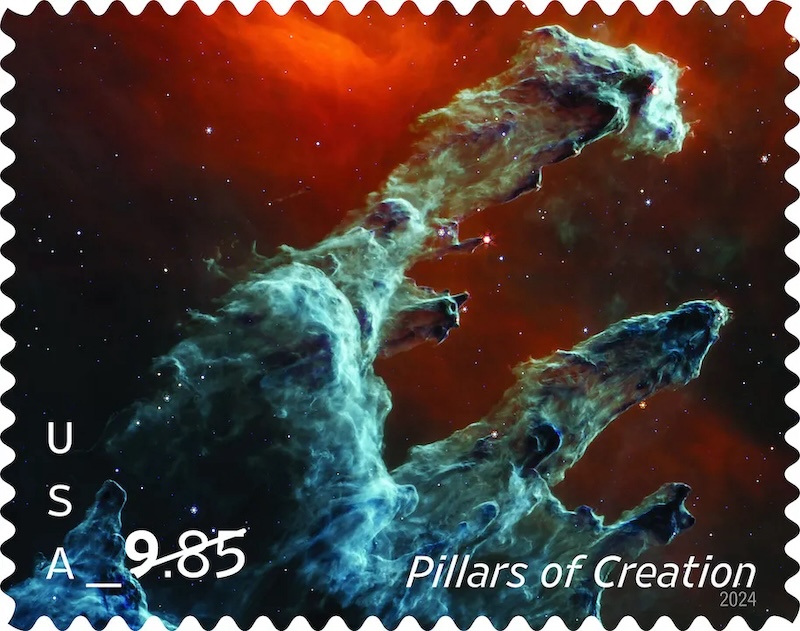


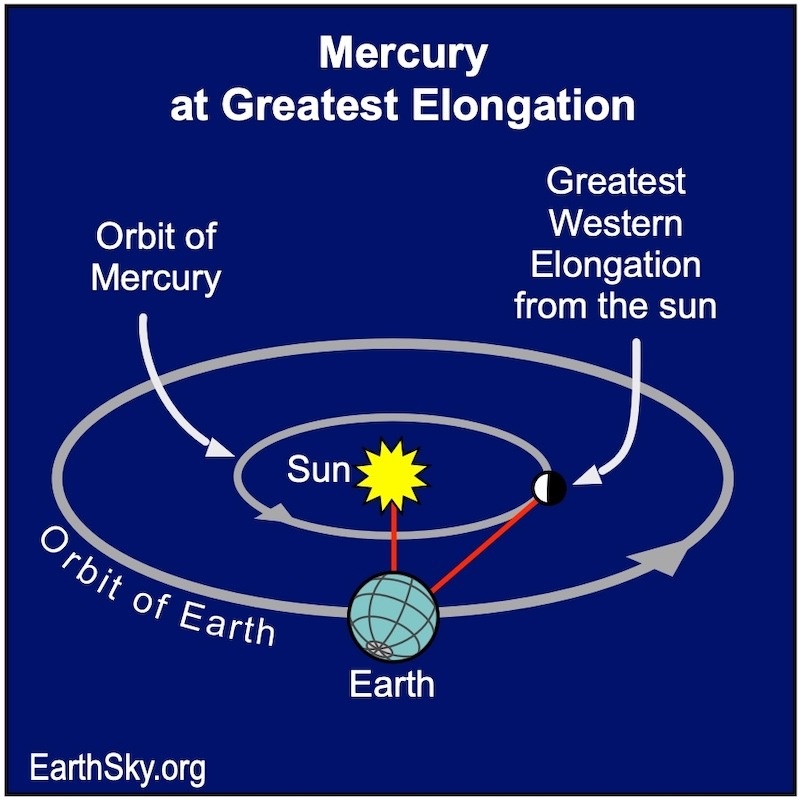
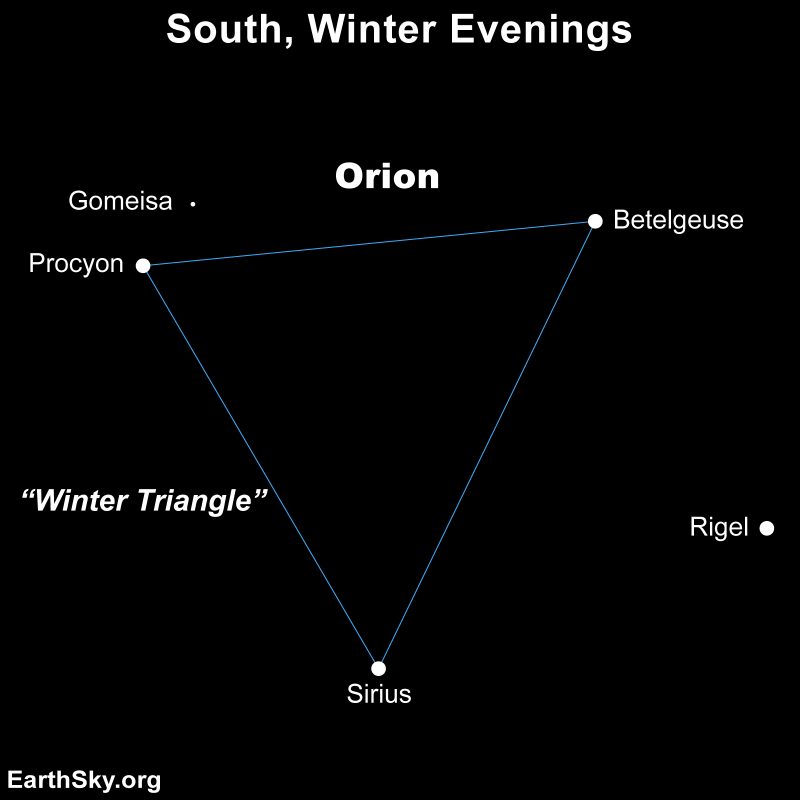
0 Commentaires